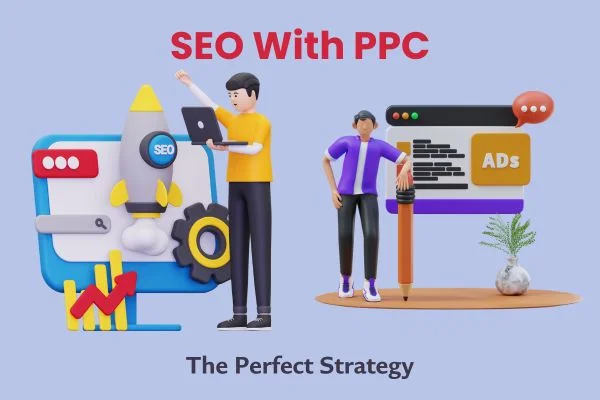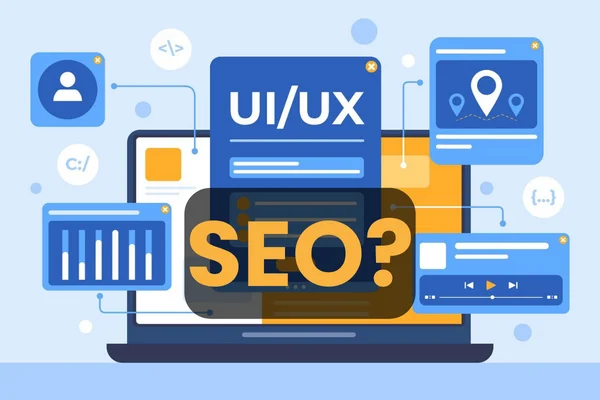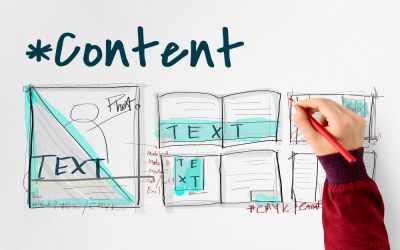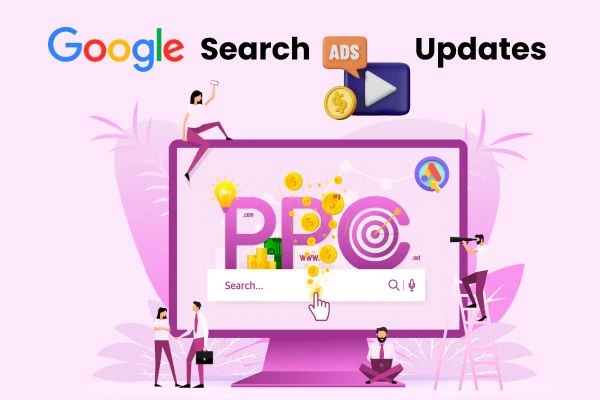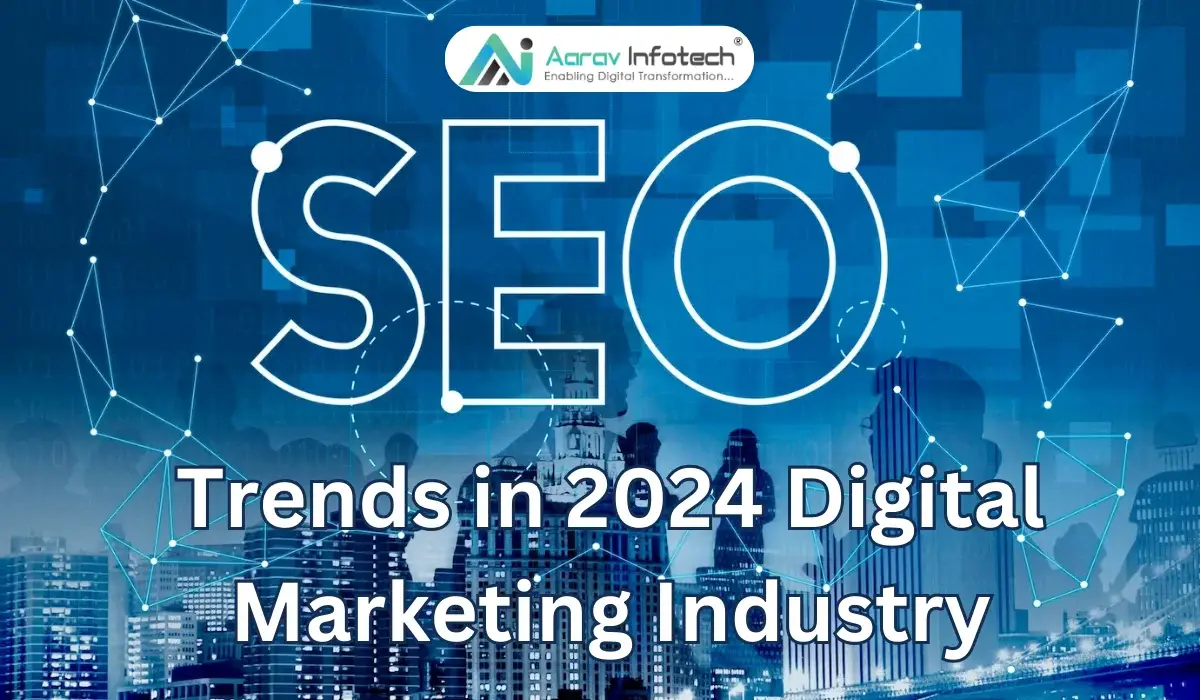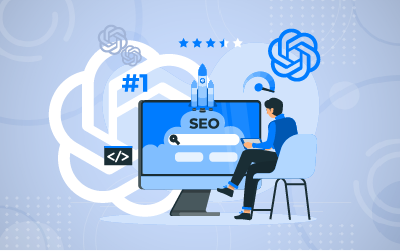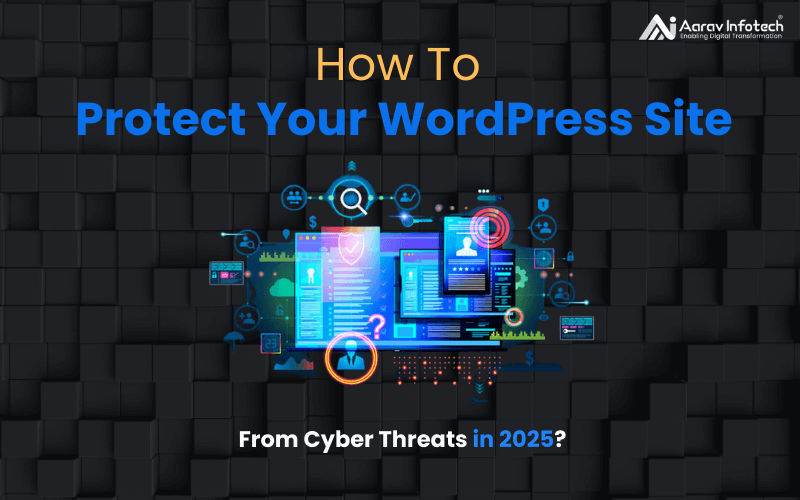Crowded Digital Bazaar
Let’s picture a crowded bazaar with most businesses trying to attract the attention of customers so desperately. This is the current state of affairs in digital world. With competition fiercer than ever, companies both large and small are trying to get their websites to rank for specific keywords and phrases on Search Engine Results Pages (SERPs) like never before.
Despite the fact that 93% of website interactions initiate with just a search, more than 90% of total existing internet websites receive no traffic, in more accurate terms, Google organic search traffic.
In any already overcrowded market it can feel like screaming into the wind just relying on SEO (Search Engine Optimisation) as the primary means of business exposure. Although PPC advertising provides a clear shot at results, maintaining that costs money and can get expensive very soon.
In this highly competitive environment, the successful strategy does not revolve around the decision of SEO or PPC but on their synergy. Combining both of these marketing forces can prove to be a very effective way of achieving the goals of increasing online presence, attracting the right type of traffic, and transforming that traffic into customers.
Introducing the Power Players: Understanding of SEO & PPC
SEO (Search Engine Optimization):
Search Engine Optimization, abbreviated as SEO is the process of improving the ranking of website in the organic search engine result pages or Natural listings from where visitors come naturally. SEO is a method of enhancing the quantity and quality of the site traffic through the altering the content and architecture of a website to improve its visibility to search engines on certain keywords.
When people type in keywords searched in the context of your company’s products or services, a properly optimized website has a greater likelihood of showing up on the first SERP. SEO seeks to drive permanent sustainable traffic and ranking in the search engine results page.
PPC (Pay-Per-Click) Advertising:
PPC advertising is a more straightforward model that basically involves having the company pay a fee each time their ad is clicked. It includes advertising content that is posted on the Search Engine Result Pages as well as on other websites.
Google Ads is one of the most well-known PPC providers for businesses, which enables them to set an amount for keywords related to the products and services offered and show ads in the search results section or in the Google Display Network or other sites. PPC is meant to generate immediate traffic and leads and appear on the top of the search engine results page for the intended keyword, thus targeting the right customers.
Why SEO and PPC Integration Matters
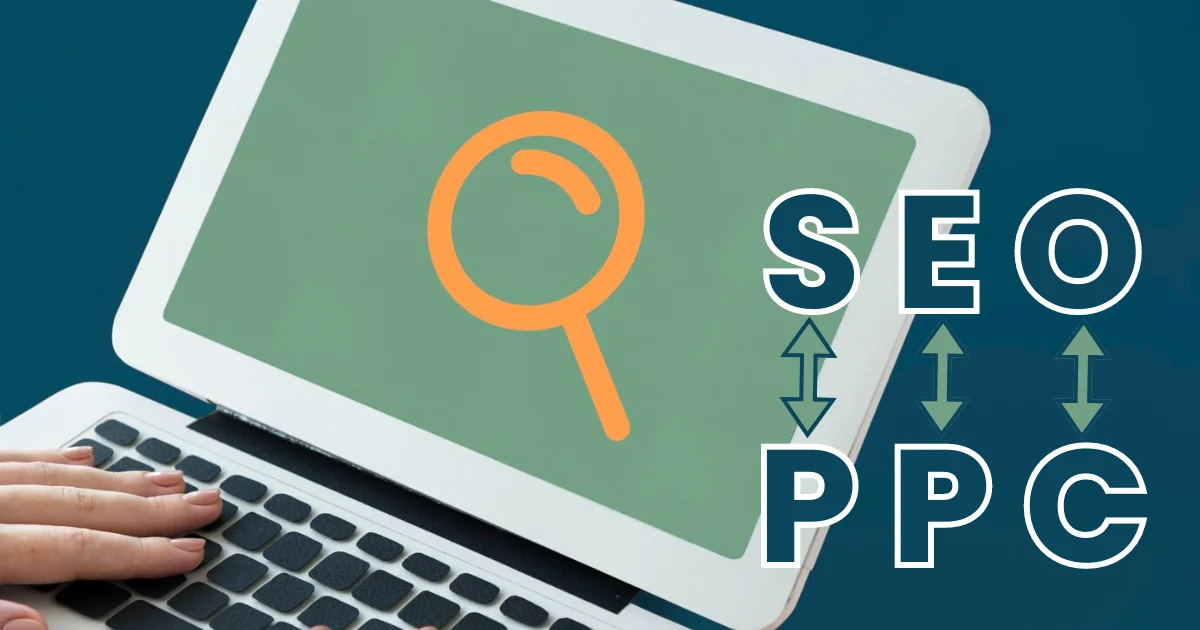
Over the years, optimization for search or SEO and advertising based on the pay per click or PPC model have usually existed as two separate entities in organizations offering marketing services. It is sometimes regarded as a fragmented approach, and it certainly has its drawbacks.
Drawbacks: It might be tempting for SEO specialists to overlook many trends that are gleaned from the users’ behavior patterns that are easily observed in PPC marketing efforts. On the other hand, paid adverting such as PPC might find it challenging to manage the PPC campaign to target users who are likely to purchase the products or services being promoted without the help of the keyword research for SEO and the analysis of user intent.
Benefit: The benefit of SEO and PPC coordination is that both of them can exchange information and data, which help in fine-tuning the keywords and optimizing the content, besides evaluating the general success of Digital marketing campaigns. For instance, certain PPC aspects will help realize which keywords are generating considerable traffic within a short span; these keywords can be worked into SEO for organic traffic. On the other hand, rather useful is the performance of keywords in the long run that is provided by SEO tools that can affect the bidding strategy for PPC ads.
Breaking the Barrier: The Power of Integration
In most cases, companies can be seen to adopt a barrier mentality to digital marketing meaning that SEO and PPC are two different fields with unique strategies and objectives. However, this approach can reduce the impact of both strategies that are to be executed in addition to potential synergies between them.
Further, getting all departments on the same page on strategy and branding creates cohesive branding and messaging across digital platforms, boosts customer experience and ensures that more users complete a desired action. When combining the instantaneous benefits of the PPC campaigns together with the constant results of the SEO, companies can benefit with a practical approach to the digital marketing model.
The Powerhouse: Why SEO and PPC Belong Together
It is important for every business person to realize that SEO and PPC advertising are two different strategies. But the fact is, when they are combined, the marketing force that is unleashed is one that is very effective in producing the desired results. Let's explore how this combined approach can supercharge your online presence:
Benefits of Combining SEO and PPC
By combining the strengths of both SEO and PPC strategies, businesses can achieve superior results in terms of visibility, conversions, and overall efficiency. Here are some key benefits:
- Laser-Targeted Keywords: Finding Hidden Gems

Can you just picture yourself trying to determine which keywords to target which will lead to the appropriate customers? In PPC however, that sort of guesswork is erased. Because PPC campaigns are set up in a way that simulate real-life RnD groups revealing various metrics such as impressions, clicks, conversions for keywords. Thus they let you see which keywords are popular with the intended customers.
Tip: You can discover which terms attract clicks, which ones deliver conversions and, most importantly, which ones get you sales to determine best keywords.
Impact: For instance, if a specific keyword is acting up well in the PPC campaign, it means that users are interested in the keyword. Incorporating such high-performing keywords into your SEO strategy means that you will be improving your website’s content to grab higher organic search rankings and thus more relevant customers for free.
According to WordStream, research has it that website that occupy top 3 organic positions get over 75% of clicks to the particular search term. What a huge unexplored opportunity that lies in front of us!
- Conversion Champions: Landing Pages That Converts
Won’t you love to know, what makes your visitors to convert on your website landing page? In particular, PPC provides an effective tool, the so-called A/B testing. This helps to test elements such as the headlines, the ad text, and the CTA on the landing pages. That’s how you find out which variations bring most clicks, and therefore – lead to more conversions within a relatively short time only.
These pieces of information are fantastic! This data can then be applied directly toward the improvement and fine-tuning of the SEO landing pages. You can then use them to make improvements to your SEO landing pages to allow for the best user experience and increased conversion rates for both your organic and paid traffic. Such an optimization process for both SEO and PPC channels leads to the optimization of the landing pages to continuously generate good quality leads and sales.
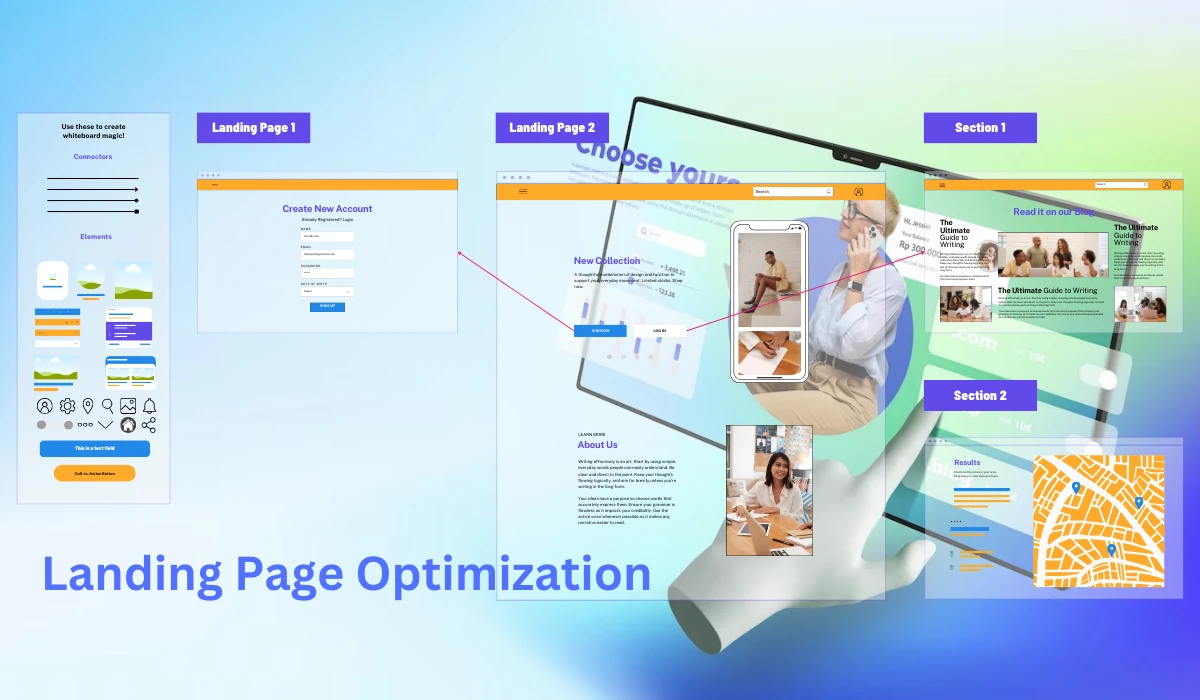
- DOUBLE THE VISIBILITY, thus DOUBLE THE IMPACT
Just think about being on top of your competitors and getting a spot at the very top of the first page of results. By attaining both paid placements through the Google Ads as well as sound organic rankings, you are, in essence, impacting on awareness levels of customers!
Impact: This double exposure keeps your brand name on top and commands the attention of potential customers as you make a lasting impression on them and also establishing confidence.
An analysis of the Nielsen relevance index unveiled that by having brands in both organic and paid rankings, there was a 20% boost in the branding recognition. Therefore, using both strategies guarantees that your brand reaches more people, and this will consequently build your market and visibility.
Another Survey conducted by Search Engine Land that highlighted people are inclined to click on the brand familiar to them. By making SEO and PPC together, you are increasing your brand visibility two fold and consequently generating a lot of more clicks and hence, traffic to your site.
- Data Makes Sense: Campaign Success Secret
It will not be possible to start marketing blindly as in the old days anymore. An SEO and PPC campaign combined delivers a goldmine of user data. They have benefits of understanding consumers’ behaviors, intent, search engine outcomes, and purchasing behaviors from both paid and organic search results.
It equips you to precise fine-tune your campaigns on an ongoing basis based on this data. This means that you can only focus on delivering the right message to the right people, which is cost-effective marketing.
Tip: For instance, PPC CTR and conversion metrics should be incorporated in refining SEO content while information on the long-term keyword performance should be used in managing PPC bidding.
- Budget Efficiency: Getting The Most Value Out of Your Marketing Budget
Admittedly, marketing money is scarce and precious today as marketers and other organizational members vie for every available dollar. This way, you make it easier to find out which keywords are good for organic search and which ones are good for paid campaigns since knowing the cost efficiency of the keywords is very important. It enables you to budget properly and therefore direct your money to pay for the words that fetch you the highest return and therefore ROI.
Tip: For example, if some of the high cost keywords in PPC are not returning a good ROI, it is possible to target them in SEO where the cost can be less and yet the traffic gained will be the same. On the other hand, keywords on the other hand which face competition in the organic search can be backed up by the PPC.
Therefore, while SEO and PPC are two separate approaches, the integration of the two is far from easy. It has been proven that integrating these two powerful approaches brings many benefits such the best visibility, maximum conversion, as well as the opportunity to use data for long-term growth. Therefore, are you ready to open the full potential of using SEO and PPC simultaneously? Contact Aarav Infotech for SEO Services and PPC Services now!

How to Align SEO and PPC Strategies: EAT Compliant
We live in the new digital frontier, the world of meme-battle, snake-water-ascender, me-too-erasure of link-baiting attention span that spans shorter than your average tweet and Venn diagram of competition as ruthless as the battle of three kings in the GOT series. This makes Search Engine Optimization (SEO) and Pay-per-click (PPC) alignment less of a luxury and more of a necessity.
Imagine this: you are an expert in making and selling jackets, and you own a small business that deals with quality hand-crafted designer jackets. Would you have two different shops functioning on two different sides of the city? SEO lets you have an open-air market where potential customers can come find you, while PPC is like approaching your target audience directly and telling them where to find you, creating a automated machine where “brands” rule the digital space and generate more and more leads and so conversions.
Here's how to align SEO and PPC strategies to create an unbeatable marketing force:
Keyword Research and Targeting
“If there be such a thing as a secret weapon today, its possession cannot be claimed by any one country.”
Likewise a cohesive keyword strategy means that for PPC, you aren’t bidding on the exact keywords that is being optimized for SEO at the same time and losing out on valuable keywords. Here's a story: When I was working with a jacket shop, they appeared to dominate SERPs for the word ‘jackets near me’, yet they didn’t seem to target ‘hand-made jackets.’ By integrating those long-tail keywords into PPC campaigns, I managed to achieve a +20% boost in conversion for hand-crafted jackets.
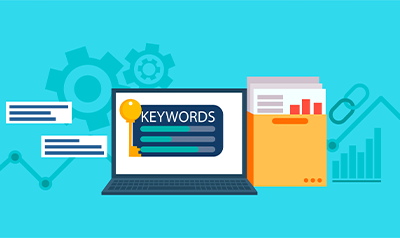
PPC as your SEO Spy: PPC campaigns provide rich real-time statistics of key metrics such as new keywords, click through rates (CTR) and conversion rates. Well, let me put it this way then, it is like fanning before the main battle or battle reconnaissance if you like to put it that way. For example, it is revealed that while using the PPC, the phrase “designer jackets” has a high CTR. This will notify you that there are people searching for this keyword and SEO optimizing this keyword is advisable.
Arm Yourself with the Right Tools: Like any ordinary warrior cannot fight without a sword, we too have our battle weapons known as industry standards. SEMrush and Ahrefs are your tools of choice, giving you the information about the search volume, competition level, and keyword difficulty. They should be used to discover valuable keywords and the performance of the keywords for both SEO and PPC campaigns.
Prioritize Like a Pro: It is important to note that the different keywords are not the same. That is in terms of Search Volume, Competition, and Relevance to your business objectives. The keywords like ‘jackets’ in high-search volume might attract attention but they are highly competitive. On the same note, specific keywords such as ‘hand crafted designer jacket’ may not necessarily pull high traffic as compared to the previous example; however, this type of traffic is highly sought after and ready to buy.
Don't Let the Wrong Crowd In: Negative Keywords are Your Bodyguards. It is like having people visit your jacket shop when what you really want is to sell hand-made jackets which is not preferred by all people. Not ideal, right? Negative keywords are sort of like the security guards who ensure that only the relevant searches find your ads. This helps to save your budget in PPC and helps your SEO campaigns to attract the kind of jacket lovers you want.
Integrated SEO and PPC mean creating a highly effective online brand that conquers the competitors and stimulates brand development. Exactly, in the world of information, knowledge is the key, so with the proper strategy, you can make your brand a real conversion tool.
Landing Page Optimization
Landing pages are the frontline of SEO and PPC and I know this from 20 years of my experience. It is not just an exercise in making pages ‘pretty’ to balance both SEO and paid traffic, it is about knowing what the intent of a user is and giving them a highly targeted, focused and persuasive experience.
Here's the thing: Many business owners also have similar perceptions about SEO and PPC. But I have to tell you they are two sides of the same coin. Data collected from each channel can feed and enrich the other, generating a sense of synergy that no casual interaction could replicate and that could only lead to serious outcomes.

Seamless User Experience: On one side of the balance, the short time to create expectations requires Web content to build trust and reduce bounce rates in a coded and highly efficient manner.
It is, in fact, important that you consider the landing page as your main online shop. You wouldn’t walk up to customers scalping or ripping a screen in a physical store, would you? The same goes online. Consistency is key.
Based on a survey done by Hub spot, 88% of those who purchase goods online claimed that a poor user experience dissuades them from using the site again. Just imagine, your company has lost the chance to work with this particular customer, who might have become a regular client.
Here's how to ensure a seamless experience across SEO and PPC landing pages:
- Visual Design: Think of a customer entering your landing page after clicking an ad that reads ‘Eco-Friendly Cleaning Products’; their mind will obviously have a green, clean image in mind and not be greeted by a page full of unrelated stock images all over. Ensure that all your communication and operation look, feel, smell akin to the values you hold.
- Navigation: Do not place the user in a position to go looking for content. According to a SurveyMonkey report, mobile users are likely to abandon a website if the site is not easy to navigate. Do not overcomplicate your navigation by making it too complex; remember, the users should be able to find something easily and fast.
- Load Speed: In particular, time is now the driving force! Research based on Google reveals that the probability of conversion goes down by 70% if the load time of the mobile site is one second longer than usual. It is recommended to ensure that your landing pages are highly optimized for page speed. Nobody likes waiting!
Optimizing for Conversions:
The aim or intent of users is central to the study of user experience design of website.
Well, let’s suppose that you own a bakery. Unless people came to your store looking for birthday cakes you would not load up all your shelve space with only birthday cakes right? The same thing can be said about landing pages. It cannot be overstressed that you need to know what users want in order to produce materials that meet their needs.
- User Intent: Spend more time refining the terms used for the search and get more detailed information on the performance of the ads. What specific terms have people been using in the SEARCH box to reach your business? Which of these keywords is delivering the most clicks in your PPC campaigns? This information should be used to determine what exactly the user is looking for, so that landing page copy and content is in line with it.
- Compelling CTAs: Standing between the visitor and conversion is your call-to-action, or CTA. Ensure that you make it positive, simple, and specific. Universal CTAs such as Learn More are ineffective, Always ensure that you adopt language that resonates with the intent of user. For instance, “Get Your Free Copy of E-Book: How to Adopt Environmentally Sustainable Cleaning Practices” is preferable.
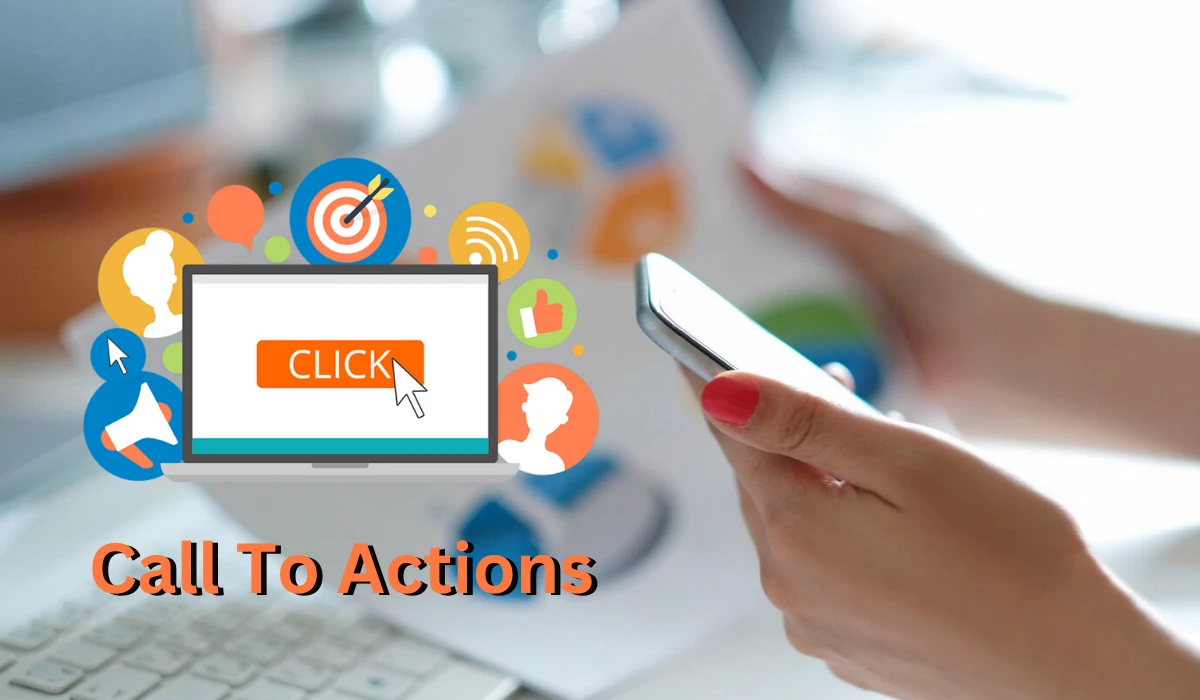
- Frictionless Forms: The forms are an inevitable part of conversion or any lead generation model but they should not be the biggest hindrance for it. Cover only what is necessary in the form by eliminating redundant questions. Remember: The shorter the conversion path, the more effective it is.
A/B Testing: Landing Page Optimization: The Art and Science of Converting Visitors into Buyers
A/B testing can be compared to a focus group for your landing page, with one significant difference – it does not require as much money. In this way, you can understand which of the tested variants of your page elements will increase the audience’s engagement and ultimately lead to more conversions.
- Headlines: Headlines are one of the initial things that capture people’s attention. Experiment with various headlines to gauge which one grabs the most attention and compels users to engage with the content.
- Images: Visuals are strong tools. Try using different pictures to find out which ones are most effective in engaging your audience.
- CTAs: It is more than okay to tinker with your CTAs. Try using different words for the same CTA, use different colored CTAs, and place the CTA in different parts of the page to see which one converts better.
Content Strategy
Consider the content strategy as a dialogue or real conversation with your target audience. The information given by SEO and PPC can give an indication as to what people are searching and interested in. Apply this data when developing content that targets specific keywords while at the same time appealing to the target market.
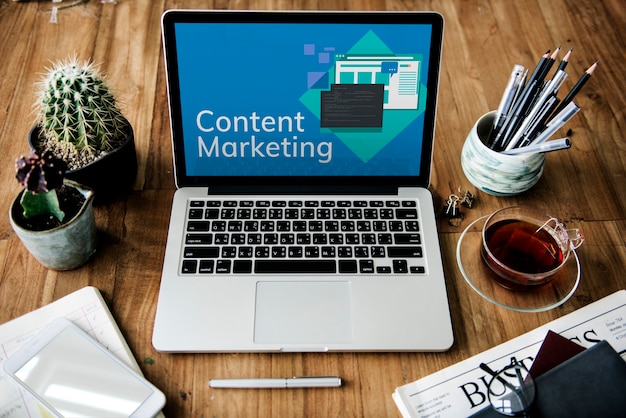
Here's how to leverage SEO and PPC data for content creation:
- Keyword Insights: Indeed, PPC campaigns are the treasury of the keyword data. Employ this data to determine the specific keywords, which are used to get conversions, and then use them in your content optimally. This makes sure that your organic content is optimizing your keywords and is applicable to search terms, hence drawing the right traffic.
- Content Gaps: Pay attention to PPC results to find out what people are trying to find that these websites do not offer. This shows particular gaps that you will be able to fill if you want to gain a bigger audience and ultimately enhance your brand visibility.
- User Queries: Now when we talk about PPC search queries, you know that they are a gold mine for understanding user intent. Analyzing these queries, you will be able to determine the more specific questions asked with your target audience. Optimize your content to answer these questions directly, helping to improve both SEO rank and the relevancy of the ads you are paying to show.
Content Promotion: Developing great content is always a challenge, but it only represents half of the problem. You also have to market it appropriately to target your niche audience.
- Boosting Visibility: Use PPC to advertise to bring traffic to the best-ranked blog articles or consolidation pages. It can greatly enhance the number of clicks and shares on social platforms, which in turn could help enhance the organic exposure and ranking later on.
- Cross-Promotion: Do not make your PPC efforts an isolated process, here’s how. Link to pages that are already doing well in paid search through the brand’s regular social media profiles and newsletters. This contributes towards direct organic growth and sales as well.
- Retargeting: Retargeting in a way helps to attract the audience that engaged with your non-commercial content but did not make a purchase. By presenting them ads that are relevant to what they have been searching or consuming in the web, one is in a position to remind them of the product you are offering and possibly lead them to action.
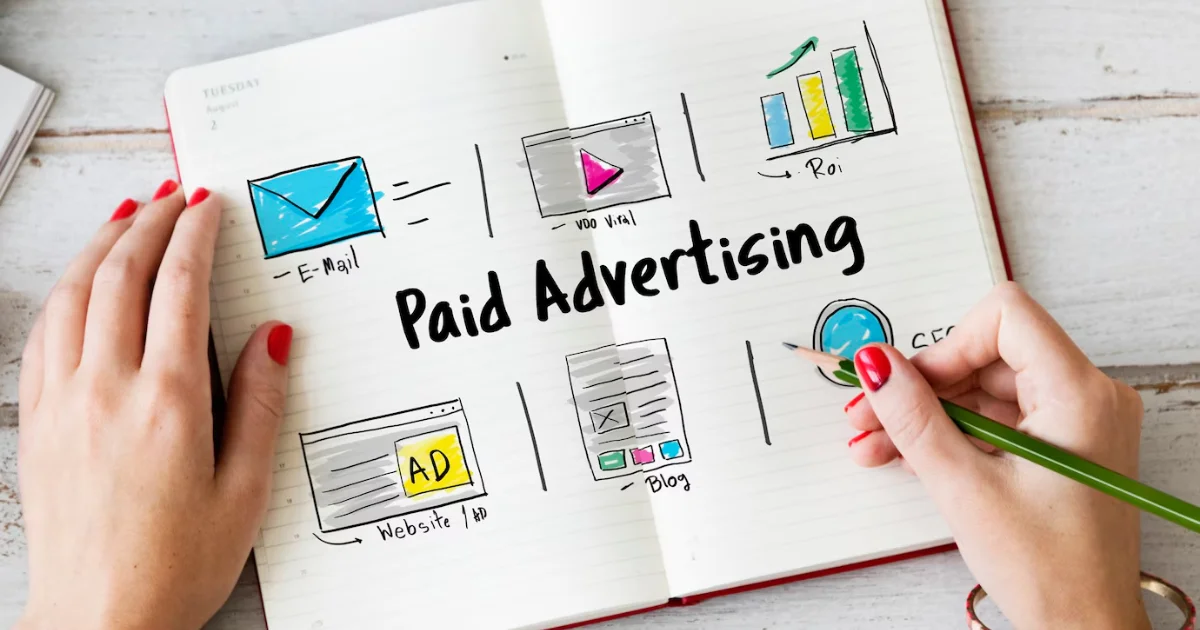
Conclusion:
The modern digital world is a battlefield, especially the business one, and every asset one has should be used in order to take and maintain territory. As we have noted, the integration of the SEO (Search Engine Optimization) and PPC (Pay-Per-Click) advertising gives a striking power, attack and defense weapon to your web marketing campaigns. By breaking barriers and integrating these two forces, powerful opportunities open up providing business highways to improved performance.
Key Takeaways: The comprehensive guide to your digital rule
- Keyword Targeting on Steroids: Think of having a secret that you can tap into to unveil the best words to use in business. Well, doing so can blend SEO and PPC into something that does exactly the same thing! PPC data is also your treasure tip in a sense as it reveals potentially profitable keywords that can feed right into your SEO efforts. This unification strategy guarantees of the best and most useful keywords to the paid and organic traffic, amplifying the search results, and attracting the quality traffic.
- Conversion Rates That Soar: Ever given a presentation or a speech and you were very sure of what your intended audience wanted to hear in detail? Focusing on AdWords and SEO, it is possible not only to get precise information about the reader’s preferences but also to improve the landing page. PPC marketing in particular gives feedback in a real time scenario of what the user connects with and this will help in better optimization of the SEO landing pages to suit the user and signal a boost in conversion.
- Building Brand Recognition Like a Boss: This is where you view your brand as an imaginary superhero. When SEO and PPC are used hand in hand then it provided the sitcom with the enhanced power of Superman and the ability to be invisible (or so it seems at least!). Integrated paid and organic visibility is a strong combination that can effectively take over SERP space on the search engine results page at the same time. Having your content seen twice is incredibly useful not only in expanding your audience reach but in gaining the trust and recognition of your audience and transforming them from window shoppers into enthusiasts.
- Data: Your Secret Weapon for Marketing Mastery: Let me introduce you to a unique tool that gives you a sneak peek into consumers’ behavior. The use of data both from the SEO analysis and from the PPC analysis gives the client just that – knowledge of how users behave. This perspective equips you with a clear plan of optimisations that let you constantly align your marketing efforts with individuals’ needs and wants.
- Budgeting Like a Black Belt: Anyone hit that dilemma where they feel they are spending money on a marketing campaign and you are not sure it’s effective. Those advertising gurus who can easily point out the keywords suitable for organic and paid searches will attest to the fact that strategic allocation of resources is as easy as a breeze. It also helps to maximize your return on investment (ROI) highlighting that your marketing budget is being spent on the right keywords, motioning, and positionings.
Final Thoughts: Let’s not merely do the bare minimum to survive in the wild, digital world.
Adding SEO to PPC is not an option; it is the essential component that makes the difference for those companies, entering the digital marketing world. They offer the real-time, data-backed guidance of PPC with the revolutionary, lasting value of SEO in one invincible combination. As these forces are harmonized, organizations stand to benefit from a coherent, solid, and effective digital marketing strategy that logically fosters visibility, interaction, and conversions like never expected.
SEO and PPC should be integrated, this is what marketing experts recommend. Develop coherent and easily understandable strategies and plans to use data and improve the effectiveness of digital marketing. If all these strategies are well aligned, then your business is capable of dominating the online space and attaining the much needed digital success to fuel your business growth in the long run which in equal measure will reflect in the bottom line you record. Therefore, if you are aspiring for any of the positions listed above, do not hesitate to contact us. Expand your horizons of digital marketing by harnessing the true potential of our SEO services and PPC services.
Confused about how SEO and PPC work together? We've got you covered!
Frequently Asked Questions

Written by: Jitendra Raulo
Jitendra Raulo is the Founding Director at Aarav Infotech India Pvt. Ltd., a leading Web Design and Digital Marketing Company with 11+ years of experience and having headquarter in Mumbai, India, and Support Centre at Bhubaneswar, India, he is actively working with Start-ups, SMEs and Corporations utilizing technology to provide business transformation solution.
